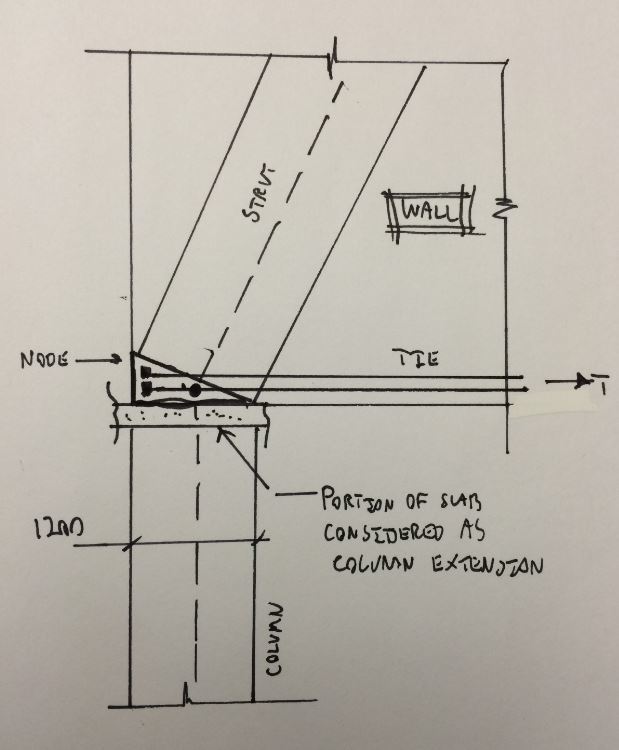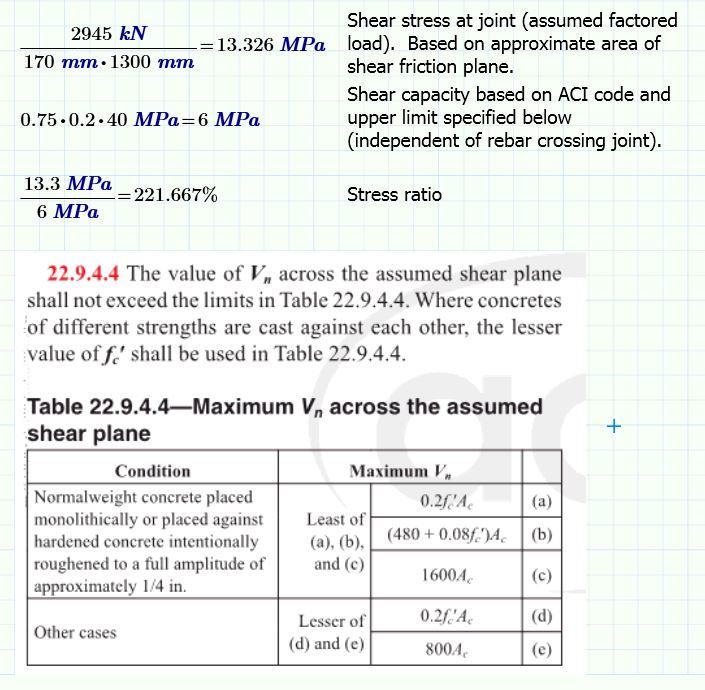OP said:
Thank you very much for you time.
No sweat. Helping each other is our thing here.
OP said:
Thanks. I asked because the code that you're using will impact your assumptions regarding transfer of lateral shear from the wall into the slab. As rapt mentioned, the detail would be vertical u-bars extending into the slab and wrapping around some longitudinal steel. Personally, I feel that's sufficient to develop the u-bars on either side of the horizontal cold joint. However, in the US and Canada, there is no provision explicitly allowing you to consider a u-bar like this to be developed any better that a straight bar with a standard hook would be. And regular hook bar development in a 200 slab will be a challenge for most u-bar diameters. For this reason alone, you might want some manner of thickening below the wall if not a full blown beam.
rapt said:
And how is the whole connection going to work with the tension tie above the top of the slab?
As shown below for the gravity case. If you envision the bit of slab sandwiched above the column as simply an extension of the column, the detail become that of any simple span, column supported deep beam.
rapt said:
There is no way I would detail it as you have shown. Why, because it feels better to me. But that is just my opinion.
Sure. And the preference that I've expressed here is simply my opinion. I believe that both details can be made to work and, in truth, my preference for placing the tie in the wall is slight. Certainly, placing the tie in slab facilitates a very appealing tie anchorage scenario.
No matter which approach is selected, the diagonal compression force needs to be "turned" vertical before it passes into the column. As a matter of general philosophy, I find it preferable to affect that change prior to the strut crossing the cold joint. One less thing to worry about in my estimation. I, like many other engineers, have reservations regarding shear friction. And, as the application gets more critical and veers further from the simple mechanisms tested, the more reservations I have.
I like to debate structural engineering theory -- a lot. If I challenge you on something, know that I'm doing so because I respect your opinion enough to either change it or adopt it.


